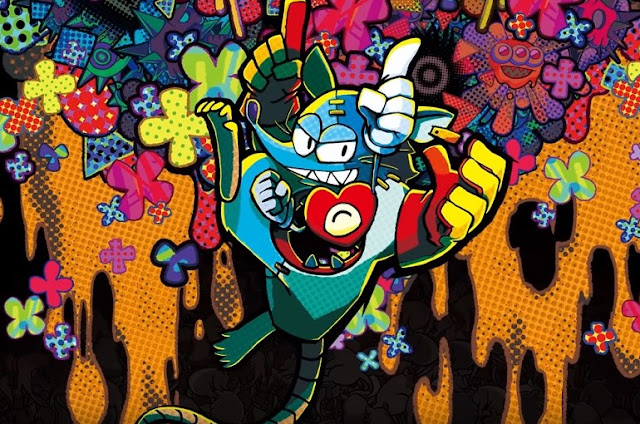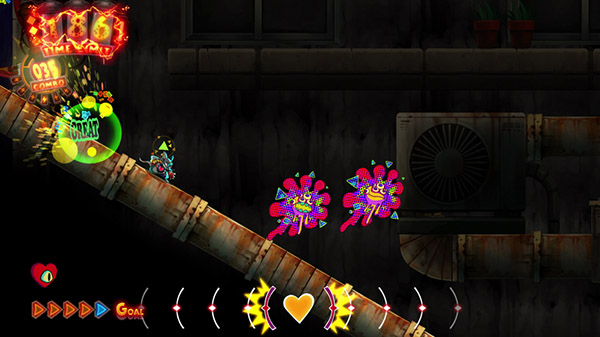Yu M: The planning for this game actually started before that of Yomawari: Midnight Shadows, but due to the success of the first game, we had to suddenly prioritize Midnight Shadows. The Yomawari games are dark, so the idea for Mad Rat Dead comes from wanting to do something lighter. In the end, this game ended up a bit dark too, however…
Matt S: The art style of Mad Rat Dead is certainly different. Where did you draw the ideas from this for, and what effect were you looking to achieve?
Yu M: I think the things that were mainly in my mind were cartoons. The topic of the game is a lab animal, which is pretty heavy, so I wanted to balance that with a “pop” aesthetic.
Matt S: Stories of unfulfilled goals at the point of death are nothing unusual in storytelling, but having a rat with them certainly is! Why did you select a rat in particular, and how do you think that choice has helped the game’s theme?
Yu M: In order to show the stage layout for action games, the character needs to be small, so having a human-sized character wouldn’t work. Because the game’s systems are based around music, I thought that BGM can equal to ringing in one’s ears. From there, the idea came to me to have the main character be a crazed lab rat who continuously hears things. And from that idea, I was able to think of the game’s themes, system loops, and scenario. In this manner, choosing the main character as I did led to many decisions that reverberated throughout the entire game’s design.
Matt S: Why do you think the fusion of action game and rhythm game works? Does it have to do with the way that games handle movement – i.e. by formalising movement as “rhythm” the player can better connect with the game?
Yu M: I think that getting into a musical rhythm is one of humankind’s primitive joys, so pressing the button in time to the rhythm and having the game react is very enjoyable. Thinking of how to incorporate this sensation into a game is how Mad Rat Dead’s systems came to be.
Matt S: Rhythm games do have a reputation for challenging people, as not everyone has a natural sense of rhythm, and the precision required of rhythm can become frustrating as a result. How are you managing that to make the game as accessible as possible?
Yu M: I made it so that the player could rewind to the section they want to. Trial and error is made simple in this game, so I believe there is also a small puzzle-like element in which you can discover which parts were played poorly.
Matt S: What is it about building new ideas (Yomawari and now Mad Rat Dead) that you find rewarding?
Yu M: I enjoy taking on new challenges. This was my first time making an action game and it presented a different kind of challenge compared to Yomawari. Creating a rhythm action game and having it contain the appropriate systems and story to go with it were challenges that I think I was able to meet with the best of my current abilities.
Yu M: That depends on the players’ reactions!
Matt S: What are some of the games that you yourself play to find inspiration?
Yu M: Starting with Super Mario Bros., there were various side-scrolling action games. For rhythm games that were skillfully combined with another element, I referenced Crypt of the Necrodancer.
For the rhythm-notes elements of the UI, I tried various things and positionings, but as I greatly admire what was done with Crypt of the Necrodancer, I ended up using something akin to that game.
Matt S: Finally, what kind of response are you hoping to achieve from players with Mad Rat Dead? What key themes and ideas are you hoping to share?
Yu M: The music that the composers created for this game is wonderful and contributes to a rhythm action game that you can enjoy with both your eyes and ears. I would also like players to enjoy how the scenario interacts with complexities of the music and unique game systems.
Thinking of a theme that I wanted to convey is hard….but let’s say since the rat is doing its best to live, I think that we humans should also do our best and live life to the fullest!
– Matt S.
Editor-in-Chief
Find me on Twitter: @mattsainsb








